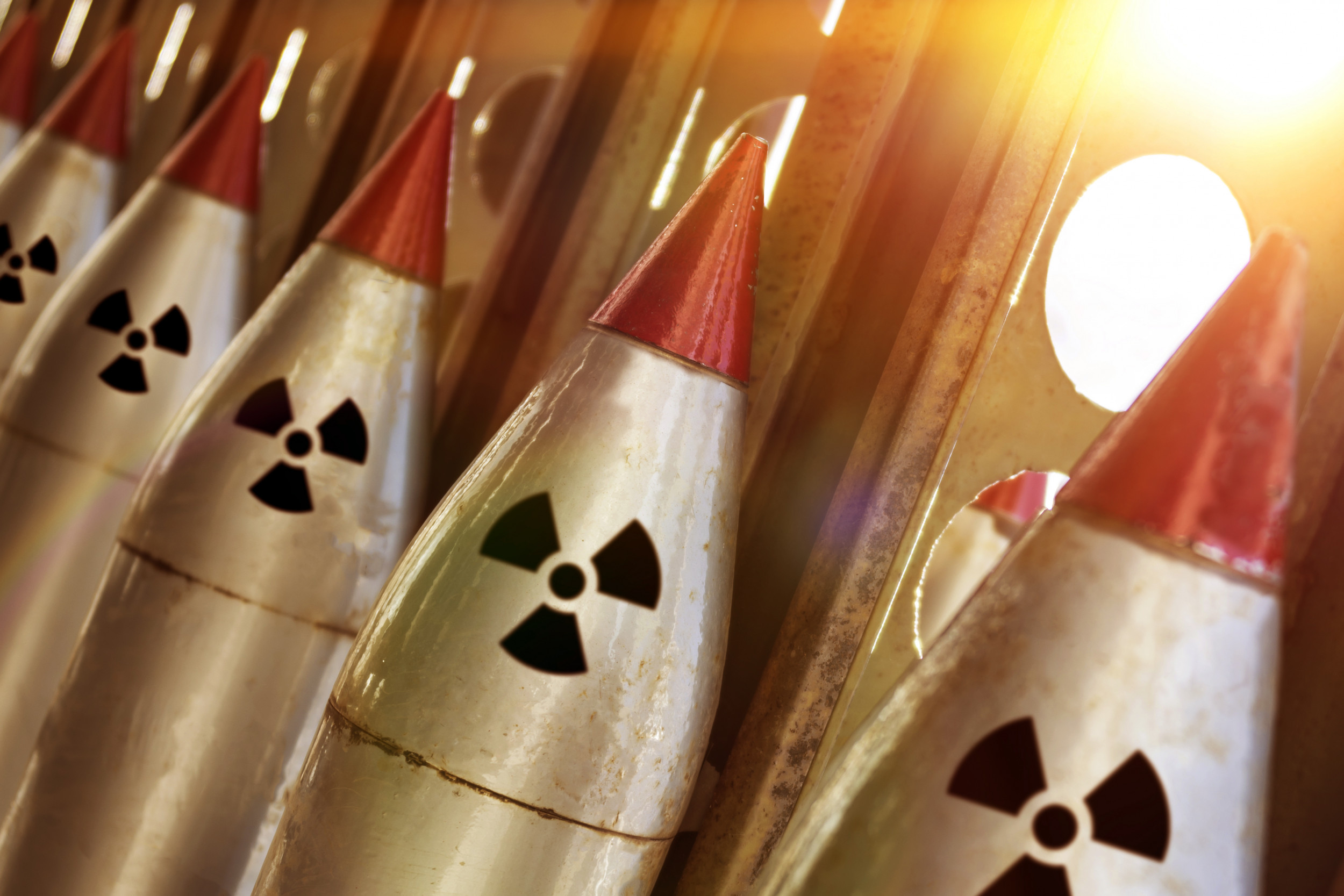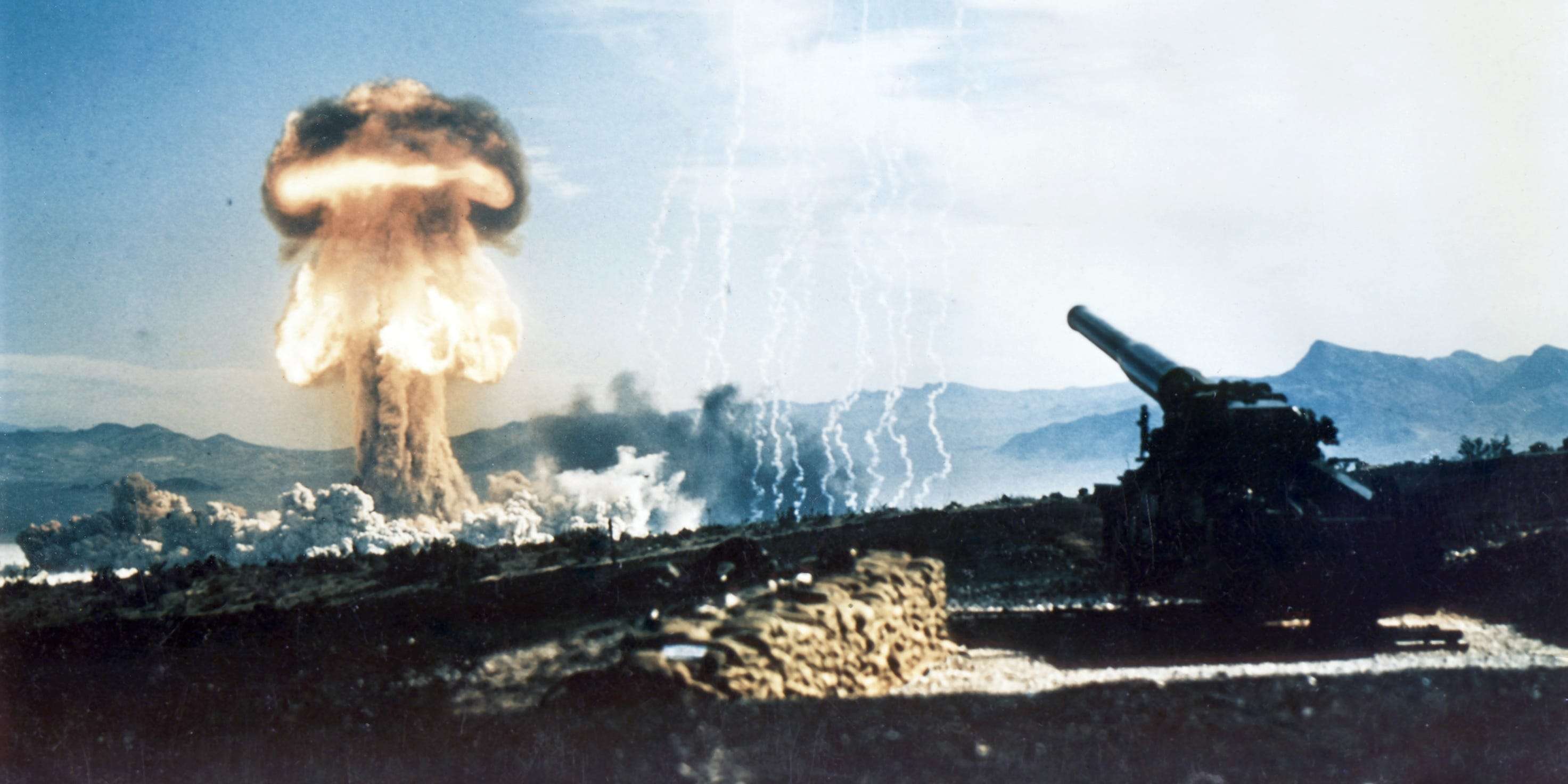
Continued funding of nuclear weapons development is a pork barrel of herculean proportions.
Biden Is Quietly Funding Nuclear Weapons
Upgrades That Could Imperil the Planet
Jonathan King and Richard Krushnic / Truthout
(March 29, 2024) — President Joe Biden’s State of the Union speech failed to discuss a critical matter — the administration’s funding for the upgrading of all three legs of the nuclear weapons triad: Intercontinental Ballistic Missiles (ICBMs), submarines and bomber aircraft. The upgrades, new weapons systems and production of new nuclear warheads are estimated to cost taxpayers over $2 trillion dollars over the next 20 years.

$886 Billion — Half of US
Discretionary Budget — Goes to the Military
Biden spent some time during the SOTU addressing the deficit and correctly attributed part of it to the Trump tax cuts. But a significant piece of the deficit is due to the extraordinary $886 billion in military spending, more than half of the U.S. government’s discretionary budget. An increasing piece of the bloated military budget is for the nuclear weapons upgrade.
The projected cost of the replacement of the 480 land-based missiles with the new “Sentinel” missiles has already risen above $756 billion over the next decade. Building new weapons can only increase the chance of nuclear war — which few of us would survive. Even if those weapons are never used, the enormous cost defers funding for housing, health care, biomedical research, food and nutrition, Veteran’s Affairs and education.
Biden could have included in his “predecessor” critique the desertion of the Iran treaty, withdrawal from the Intermediate-Range Nuclear Forces and Open Skies treaties. But he didn’t. He could have referred to the passage of the Treaty on the Prohibition of Nuclear Weapons, and the fact that the START Treaty is still in force as offering hope for increased security. But he didn’t.
Perhaps Biden, despite his saber-rattling toward Putin in the opening of the SOTU, is not planning on garnering support for these programs by traditional Cold War drumbeating — as did Reagan with his attacks on the Soviet “Evil Empire.” Instead, his administration appears to be following a stealth strategy of keeping Americans from learning how their tax dollars are being misspent.

Sentinels: New Version of the US Suicide Machine
What’s more likely is that Biden is concerned these expenditures will be recognized as the giant pork barrel that they are. Consider the replacement of the Minuteman ICBMs with the new Sentinels. There is no military justification for this project. The ICBMs are totally vulnerable since their fixed locations are known with precision; in addition, once launched, they can’t be recalled or retargeted. If launched, that will lead to the counter launching of missiles targeted at U.S. cities, resulting in the deaths of tens of millions of Americans.
Clearly, the biggest contribution of the ICBM force to U.S. national security would be their retirement. However the combined influence of the ICBM caucus of senators from the missile site states, the Air Force, together with major contractor Northrop Grumman, and the other contractors who receive these cost-plus contracts, is driving the funding of replacements. According to analyst William Hartung, “The top 11 contractors working on the new ICBM spent more than $119 million on lobbying in 2019 and 2020 and employed 380 lobbyists.”
Arguments that retiring the ICBMs would weaken the U.S. nuclear deterrent are baseless. The remaining nuclear weapons forces would still represent mind-boggling nuclear overkill.
Because of secrecy, assessing the precise number of U.S. nuclear weapons deployed and in storage using U.S. government sources is difficult. However, a reliable lower limit is provided by the Nuclear Notebook, a publication of the Nuclear Information Project (NIP) of the Federation of American Scientists. These NIP sources are for 2023.

Nuclear-armed Artillery Shells Don’t Count
The report concludes that there were approximately 5,550 warheads in the U.S. arsenal. This is almost certainly too low, since battlefield weapons like nuclear-armed artillery shells, are probably not included. We estimate that deployed nuclear weapons for the submarine-based and airborne legs of the triad include 2,140 warheads, all of which are many times more powerful than the bombs dropped on Japan.
The deployed weapons include 700 W76-1 warheads on Trident missile submarines of 90 kiloton yield; 200 W-80-1 warheads on Trident missile submarine of 475 kiloton yield; 170 Bomber bombs with W-80-1 warheads of five and 15-170 kilotons; and 120 Bomber bombs with B61-7 warheads of 10-340 kilotons.
Weapons in reserve include 330 W-80-1 Trident Missile Submarine warheads of 475 kiloton yield; 800 W-76-1 Trident missile submarine warheads of 90 kilotons; 168 B-61-7 bombs for long range bombers of 10-340 kilotons. We estimate 2224 in this category.
A third category includes 1536 “stockpiled” nuclear weapons.
The destructive capacity of these thousands of weapons is almost beyond comprehension: Just one of the 14 Ohio-class submarines, with multiple missiles and multiple independently targeted warheads on each missile, can obliterate all the major cities of any nation in the world.
In fact, the continued funding of nuclear weapons development is a pork barrel of herculean proportions, funneling tax dollars from all Americans into the pockets of the nuclear weapons industry. We suspect that the Biden administration’s silence represents their decision to keep this boondoggle out of public view.
Jonathan King and Richard Krushnic are members of the Nuclear Disarmament Working Group of Mass Peace Action, and write frequently on the costs of nuclear weapons production and deployment.
Posted in accordance with Title 17, Section 107, US Code, for noncommercial, educational purposes.